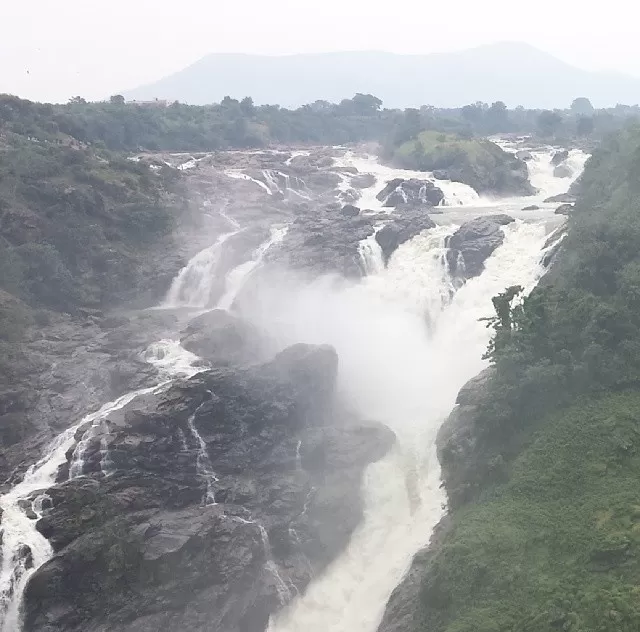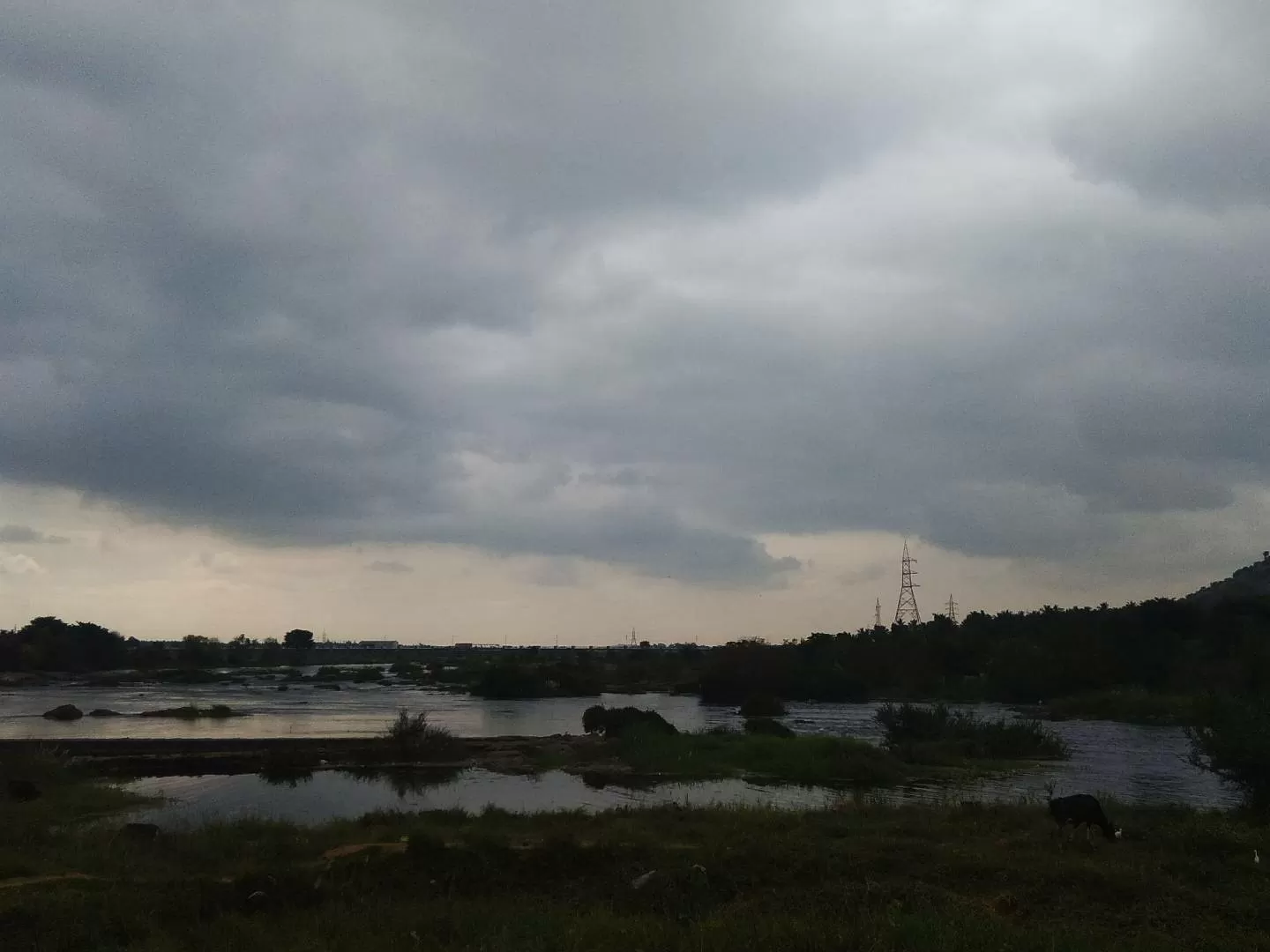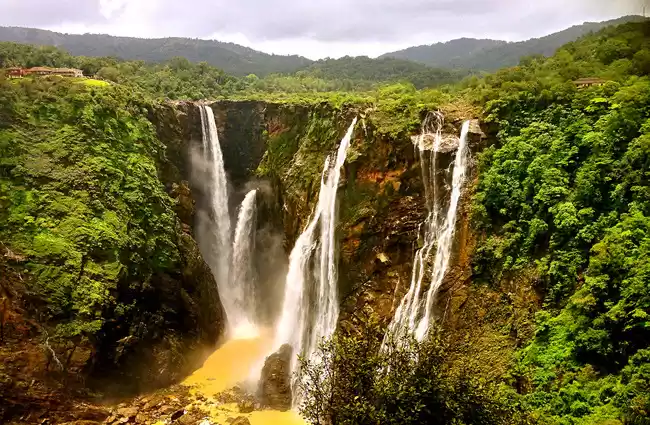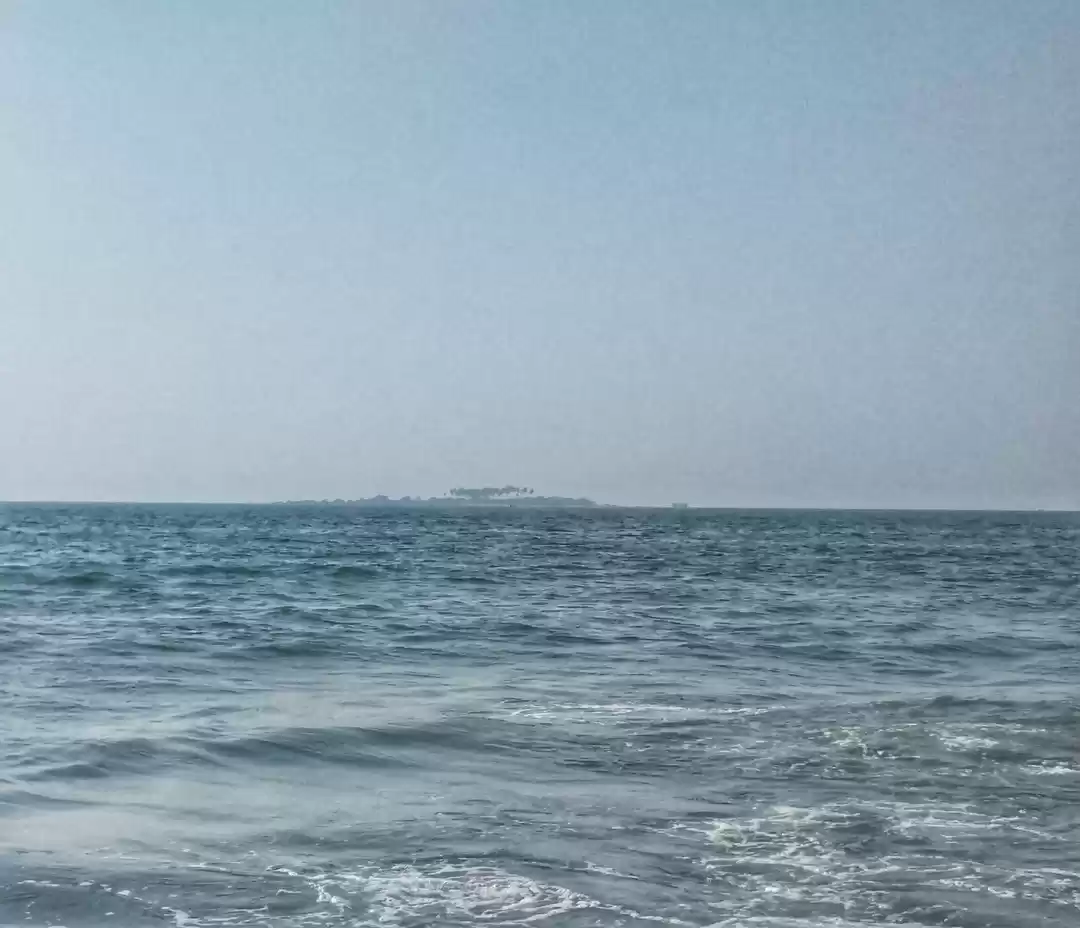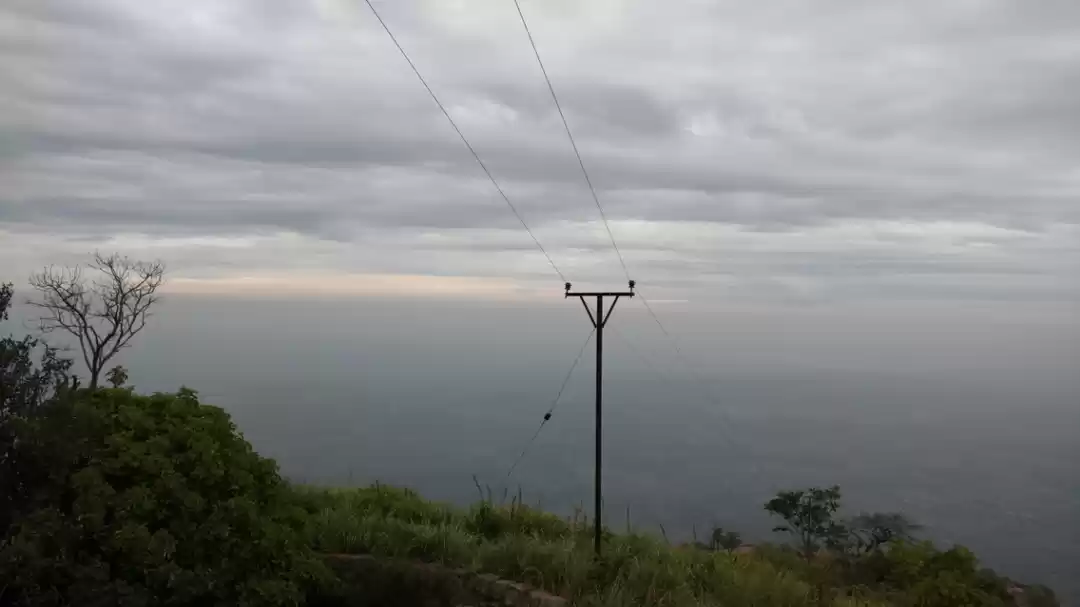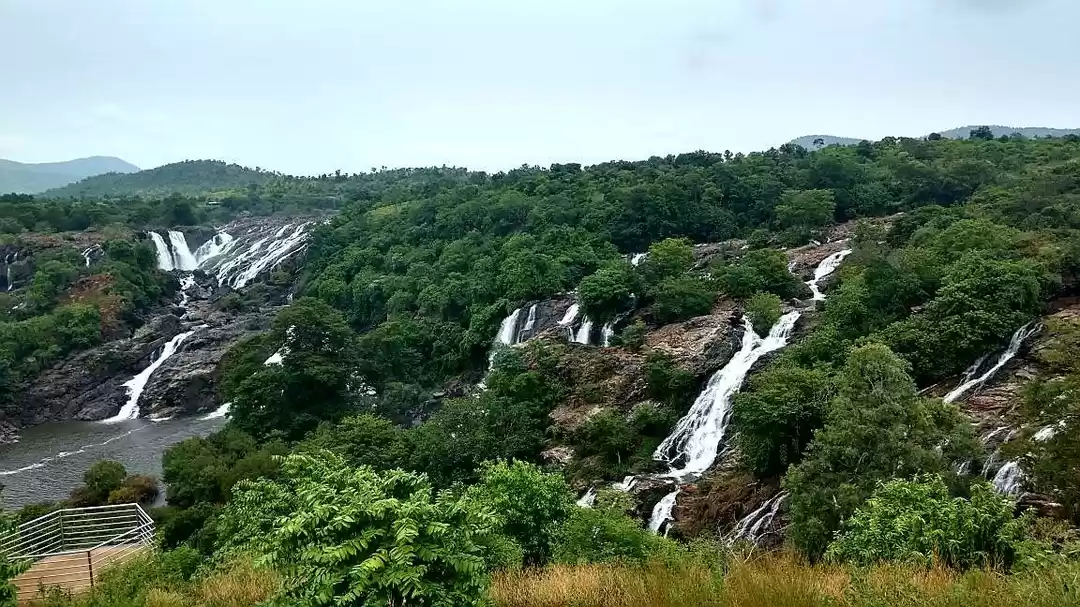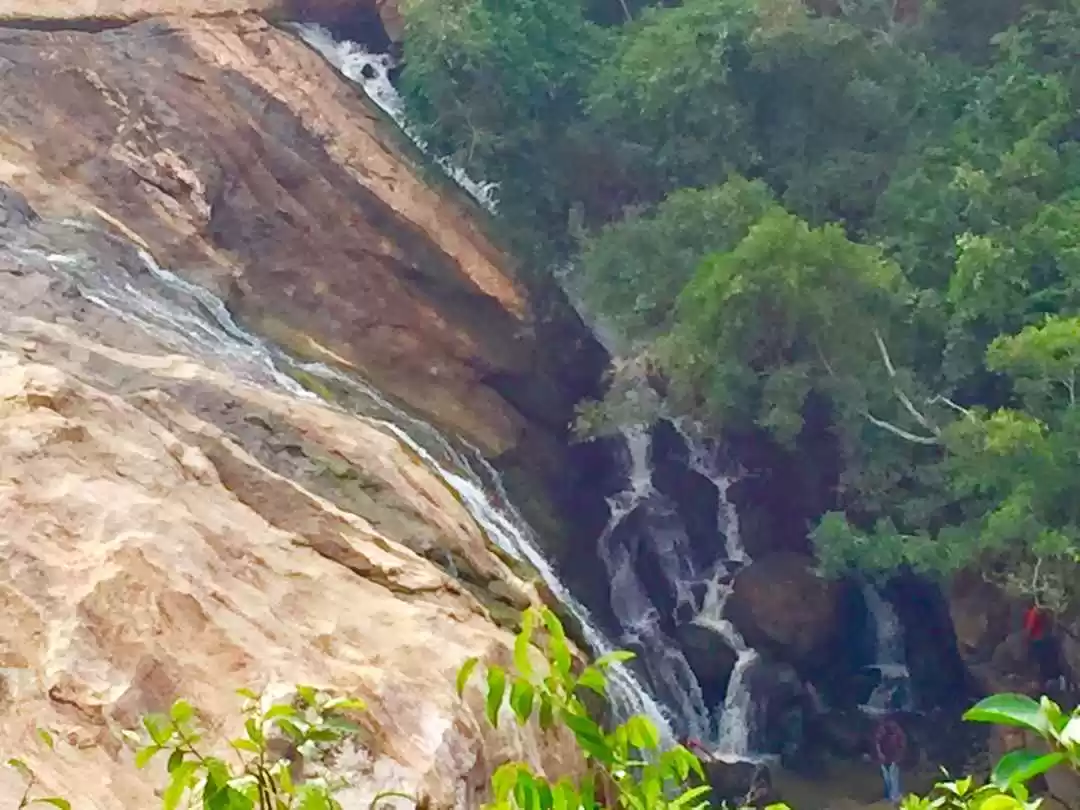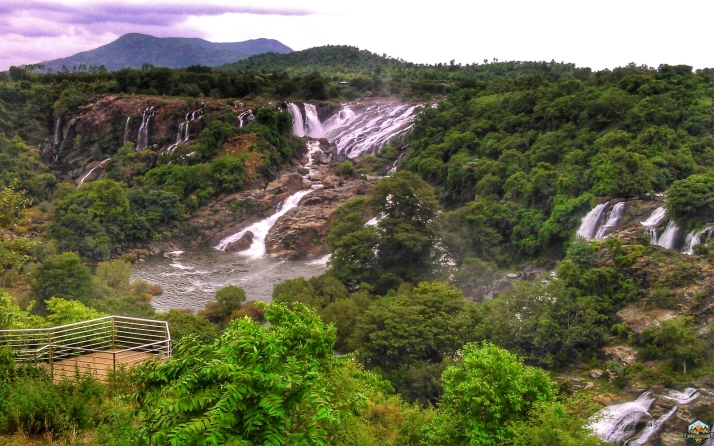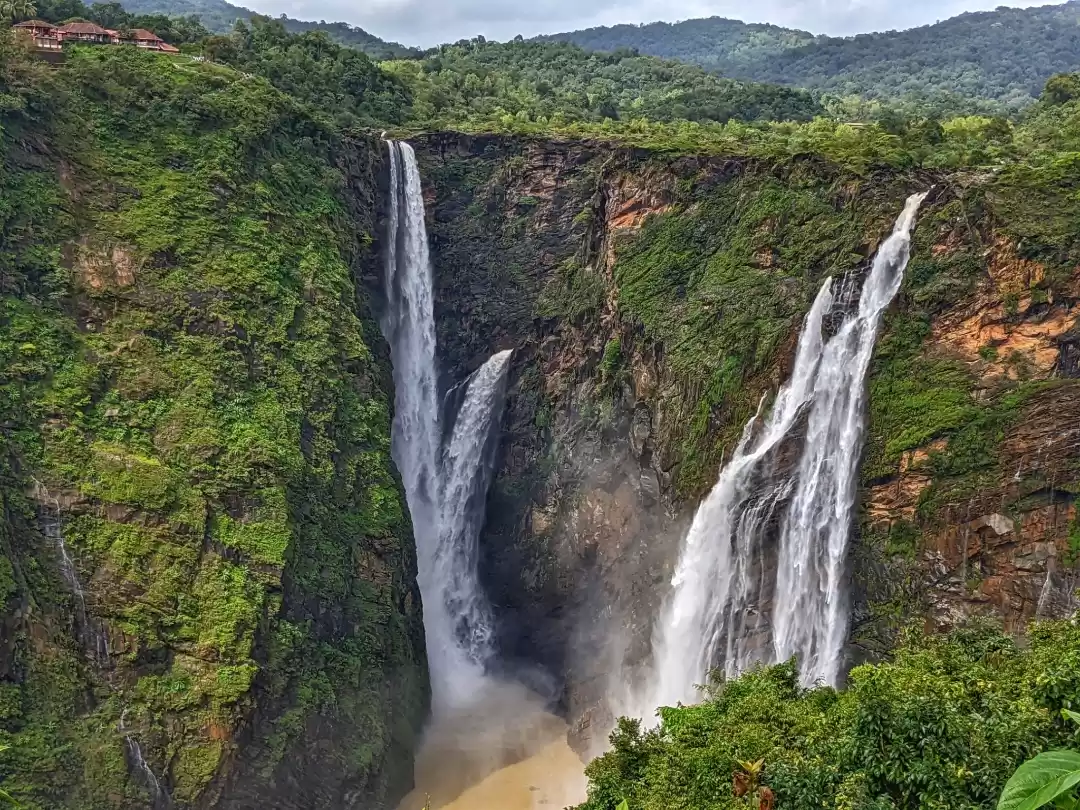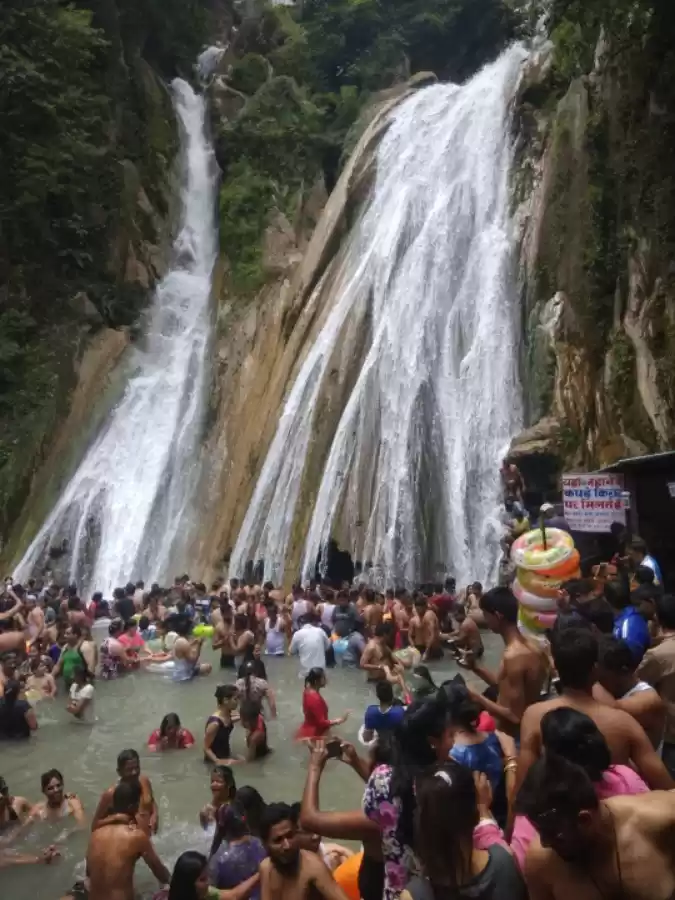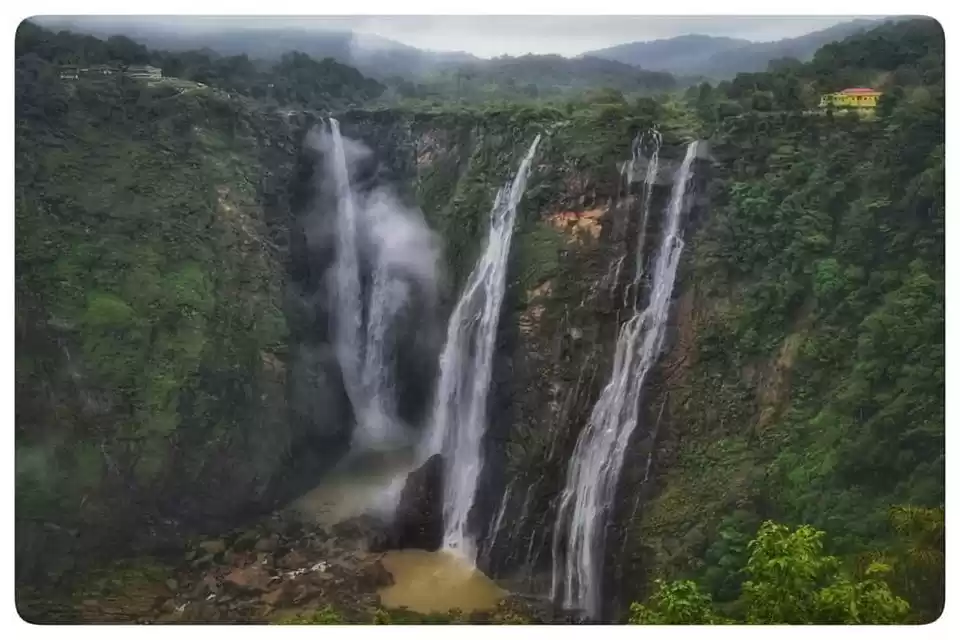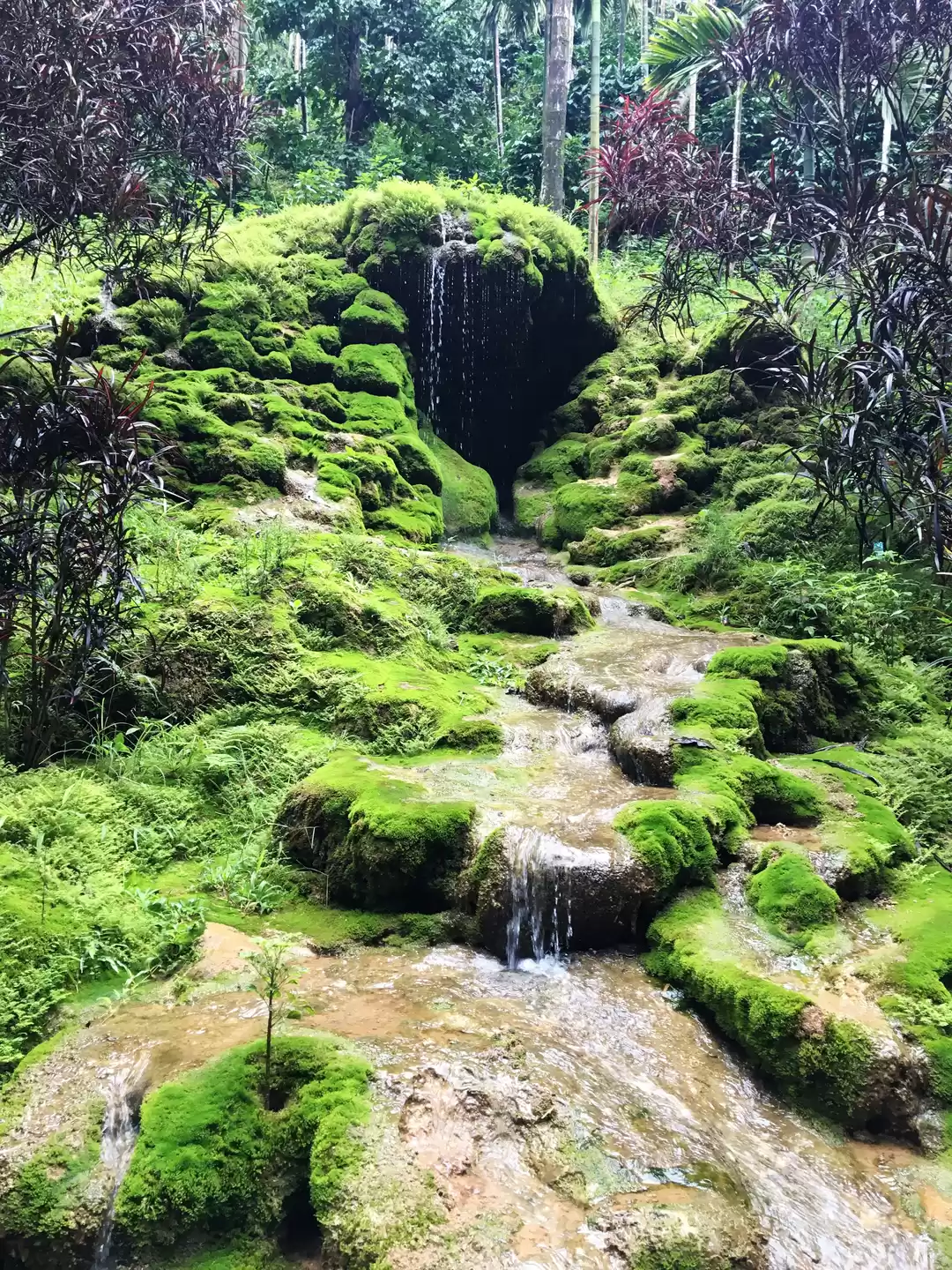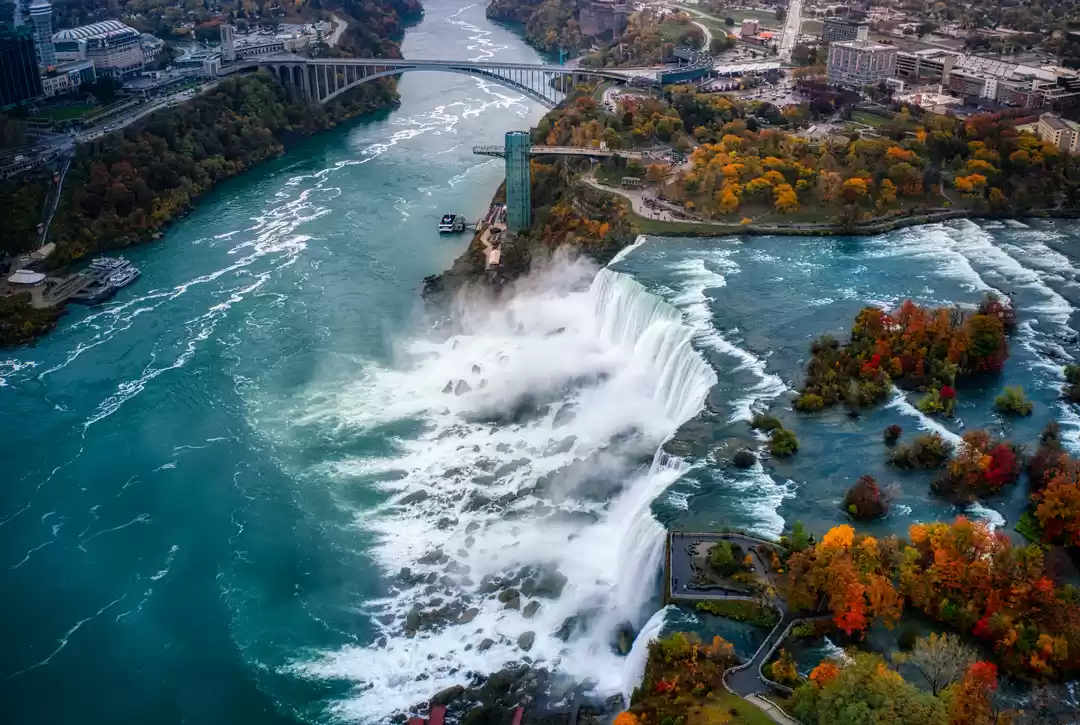Shivanasamudra Falls is one of the most stunning natural wonders of India. Located on the Kaveri river in Karnataka, this waterfall is a cluster of two main falls, Gaganachukki and Barachukki, that create a breathtaking spectacle of water, mist, and rainbows. Whether you are looking for a scenic getaway, a historical exploration, or an adventurous thrill, Shivanasamudra Falls has something for everyone.
In this article, we will provide you with a comprehensive and updated guide to visiting and exploring the falls, covering everything from how to reach, where to stay, when to visit, what to see, and what to do. Read on to discover the beauty and charm of Shivanasamudra Falls.
Gaganachukki and Barachukki Falls: The Twin Waterfalls of Shivanasamudra
The main attraction of Shivanasamudra Falls is the twin waterfalls of Gaganachukki and Barachukki, which are separated by a few kilometers and can be viewed from different vantage points. Gaganachukki is the western branch of the Kaveri river that splits into two segments and plunges down a rocky cliff in a horseshoe shape. Barachukki is the eastern branch of the river that forms a wide cascade over a series of steps. Both falls are about 90 meters high and 300 meters wide, and create a majestic sight, especially during the monsoon season when the water flow is at its peak.
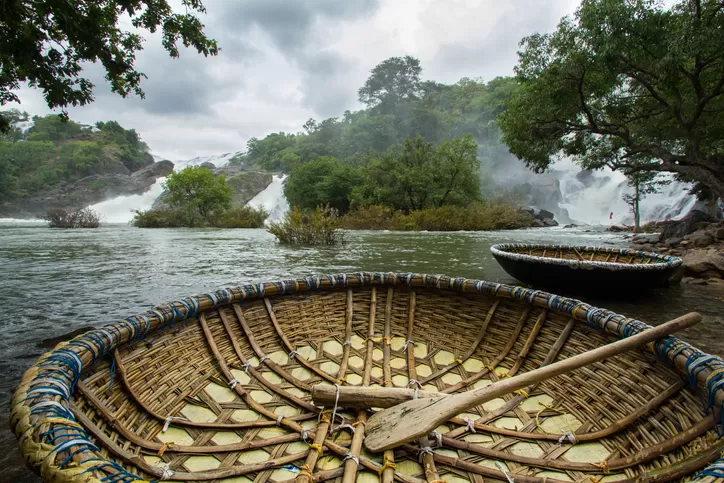
To enjoy the best views of Gaganachukki, you can visit the Dargah Viewpoint, which is a platform near a mosque that overlooks the falls from a distance. You can also visit the Hydro-Electric Power Station Viewpoint, which is a closer and more panoramic view of the falls from the opposite side. To enjoy the best views of Barachukki, you can visit the Barachukki Viewpoint, which is a walkway that leads to the edge of the falls and offers a spectacular view of the cascade and the valley. You can also opt for a boating or a coracle ride that takes you to the base of the falls and lets you experience the spray and the sound of the water up close.
Some tips and warnings for visiting the twin waterfalls are:
- The best time to visit the falls is during the monsoon season from July to October, when the water flow is the highest and the falls are the most impressive. However, be prepared for heavy rains, slippery roads, and crowded viewpoints.
- The entry ticket for the falls is Rs. 20 per person and Rs. 30 per vehicle. The parking fee is Rs. 50 per vehicle. The boating or coracle ride fee is Rs. 100 per person.
- Swimming or bathing in the falls is strictly prohibited due to the strong currents and the depth of the water. There have been many accidents and fatalities in the past due to people ignoring this rule.
- Beware of the monkey menace at the viewpoints, as they can snatch your food, belongings, or even attack you. Do not feed or provoke them, and keep your valuables safe.
- Shivanasamudra Hydro-Electric Power Station: The First of its Kind in Asia and India
Another interesting feature of Shivanasamudra Falls is the hydro-electric power station that is located near the Gaganachukki falls. This power station is one of the first in Asia and India, and has a remarkable history and significance. It was established in 1902 by the then Maharaja of Mysore, Krishnaraja Wodeyar IV, and the British engineer, Diwan Sheshadri Iyer, to supply electricity to the Kolar Gold Fields, which were about 150 kilometers away. The power station used the water from the falls to generate electricity through turbines and generators, and transmitted it through high-voltage lines. The power station was a marvel of engineering and innovation at that time, and marked the beginning of the industrial revolution in India.
The power station is still operational today, and has a capacity of 42 megawatts. It is managed by the Karnataka Power Corporation Limited (KPCL), and is open to visitors with prior permission. You can see the original turbines, generators, and transmission lines, and learn more about the history and functioning of the power station. You can also enjoy the view of the Gaganachukki falls from the power station, which is different from the other viewpoints.
Some facts and statistics about the power station are:
The power station was inaugurated by Lord Curzon, the then Viceroy of India, on November 9, 1902.
The power station was the first in Asia and India to use alternating current (AC) for transmission, and the second in the world after Niagara Falls in the USA.
The power station was the first in India to use three-phase power for transmission, and the first in the world to use 40,000 volts for transmission.
The power station was the first in India to use oil-filled cables for transmission, and the first in the world to use steel towers for transmission.
The power station was the first in India to use synchronous motors for power factor correction, and the first in the world to use automatic voltage regulators for voltage control.
Ranganatha Temple: The Ancient and Sacred Shrine of Shivanasamudra
Shivanasamudra Falls is not only a natural wonder, but also a religious destination. Near the falls, there is an ancient and sacred temple dedicated to Lord Ranganatha, who is a form of Lord Vishnu. The temple is also known as Madhya Ranga, which means the middle Ranga, as it is located between the two other famous Ranganatha temples in Srirangapatna and Srirangam. The temple is believed to be one of the oldest in Karnataka, and has a rich history and legend associated with it.

According to the legend, the temple was built by a king named Tirumala Raya, who was a devotee of Lord Ranganatha. He had a dream in which the Lord instructed him to build a temple for him at Shivanasamudra, where he would reside in the form of a self-manifested idol. The king followed the Lord’s command, and found the idol in the river near the falls. He then constructed a beautiful temple for the idol, and worshipped it with devotion. The temple became a popular pilgrimage site, and attracted many devotees and saints over the years.
The temple has a unique architecture and deity, that reflect its antiquity and sanctity. The temple is built in the Dravidian style, with a gopuram (tower), a mandapa (hall), and a garbhagriha (sanctum). The temple is surrounded by a stone wall, and has a spacious courtyard. The temple also has a pond, a well, and a garden. The deity of the temple is a black stone idol of Lord Ranganatha, who is reclining on a serpent bed, with his consort Goddess Lakshmi at his feet, and Lord Brahma emerging from his navel. The idol is about six feet long, and is adorned with jewels and flowers. The idol is said to have a miraculous power, and grants the wishes of the devotees.
The temple has a vibrant and festive atmosphere, especially during the special occasions and celebrations. The temple conducts daily poojas (worship rituals) for the deity, and offers prasadam (sacred food) to the devotees. The temple also celebrates various festivals throughout the year, such as the car festival, the chariot procession, the boat festival, and the flower festival. The most important festival of the temple is the Rathotsava, which is held in the month of March or April, and involves a grand procession of the deity on a decorated chariot around the town. The festival attracts thousands of devotees, who participate in the event with devotion and enthusiasm.
Cauvery Wildlife Sanctuary: The Biodiverse and Adventurous Destination near Shivanasamudra
If you are a nature lover and an adventure seeker, you will love the Cauvery Wildlife Sanctuary, which is a biodiverse and adventurous destination near Shivanasamudra Falls. The sanctuary is a protected area that covers an area of about 1,027 square kilometers, and spans across the districts of Mandya, Ramanagara, and Chamarajanagar. The sanctuary was established in 1987, and is named after the Kaveri river, which flows through it. The sanctuary is home to a variety of flora and fauna, and offers a range of activities and attractions for the visitors.

The sanctuary boasts of a rich and diverse flora, that includes dry deciduous forests, riverine forests, scrub forests, and grasslands. The sanctuary has more than 300 species of plants, some of which are endemic and endangered. Some of the prominent plants in the sanctuary are sandalwood, rosewood, teak, bamboo, and tamarind. The sanctuary also has a number of medicinal plants, such as aloe vera, turmeric, and neem.
The sanctuary is also a haven for wildlife, that includes mammals, birds, reptiles, amphibians, and fish. The sanctuary has more than 50 species of mammals, some of which are rare and threatened. Some of the notable mammals in the sanctuary are elephants, tigers, leopards, sloth bears, wild dogs, gaurs, sambar, chital, and otters. The sanctuary also has more than 200 species of birds, some of which are endemic and migratory. Some of the remarkable birds in the sanctuary are the Malabar pied hornbill, the blue-bearded bee-eater, the osprey, the black eagle, and the spot-billed pelican.
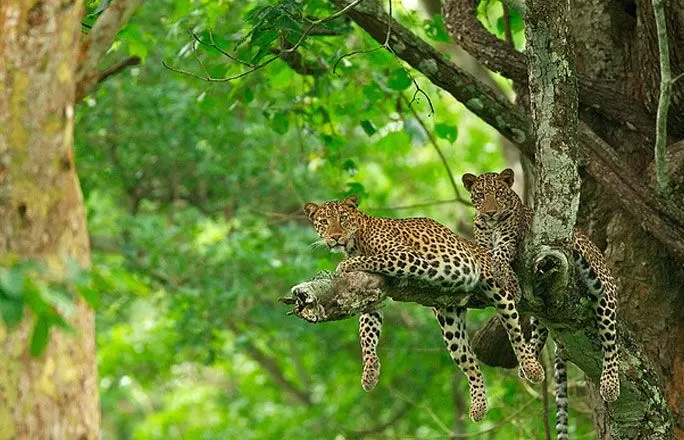
The sanctuary also has more than 50 species of reptiles, some of which are venomous and endangered. Some of the fascinating reptiles in the sanctuary are the mugger crocodile, the king cobra, the python, the monitor lizard, and the chameleon. The sanctuary also has more than 20 species of amphibians, some of which are rare and colorful. Some of the attractive amphibians in the sanctuary are the Malabar gliding frog, the golden frog, the burrowing frog, and the tree frog. The sanctuary also has more than 100 species of fish, some of which are exotic and edible. Some of the notable fish in the sanctuary are the mahseer, the catfish, the carp, and the eel.
Activities and attractions
The sanctuary offers a range of activities and attractions for the visitors, that cater to different interests and preferences. You can enjoy the following activities and attractions in the sanctuary:

Trekking:
You can explore the trails and paths of the sanctuary, and enjoy the scenic views and the wildlife sightings. You can choose from different levels of difficulty and duration, depending on your fitness and experience. You can also hire a guide or join a group for a better and safer experience. Some of the popular trekking routes in the sanctuary are the Mekedatu trek, the Sangam trek, the Bheemeshwari trek, and the Galibore trek.
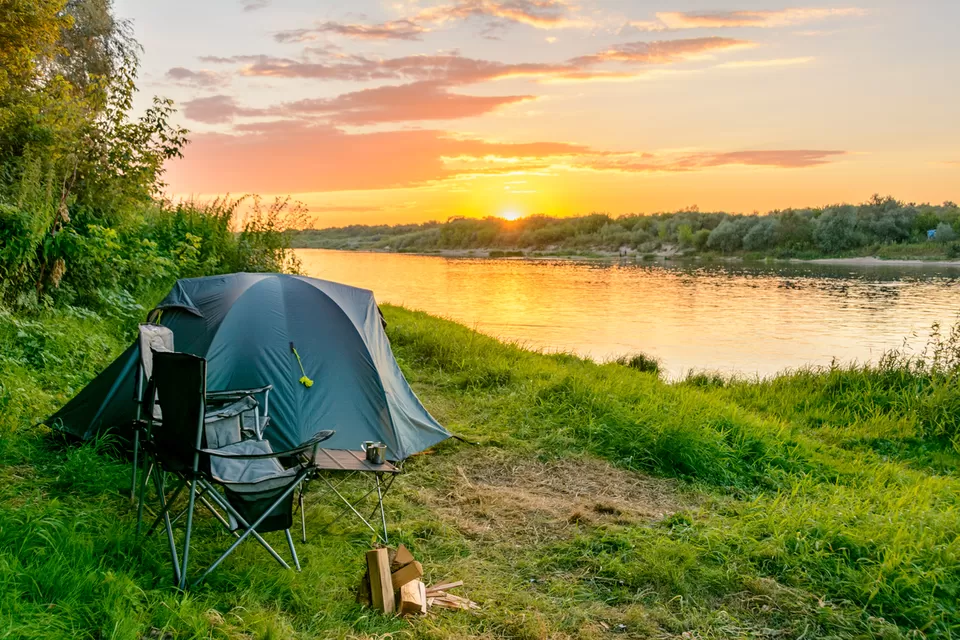
Camping:
You can spend a night or two in the wilderness of the sanctuary, and experience the thrill and the serenity of nature. You can pitch your own tent or book a tented accommodation, and enjoy the facilities and amenities provided by the authorities or the operators. You can also enjoy the bonfire, the barbecue, the star gazing, and the night safari. Some of the best camping sites in the sanctuary are the Bheemeshwari Nature Camp, the Galibore Nature Camp, and the Doddamakali Nature Camp.
Fishing:
You can indulge in the sport of fishing or angling in the Kaveri river, and catch some of the finest and the largest fish in the world. You can use your own equipment or rent it from the authorities or the operators, and follow the rules and regulations of the activity. You can also release the fish back into the water after catching them, as a gesture of conservation and respect. Some of the best fishing spots in the sanctuary are the Bheemeshwari Fishing Camp, the Galibore Fishing Camp, and the Doddamakali Fishing Camp.

Wildlife Watching:
You can observe and admire the diverse and abundant wildlife of the sanctuary, and learn more about their behavior and ecology. You can use your own binoculars or cameras, or borrow them from the authorities or the operators, and follow the guidelines and etiquette of the activity. You can also join a guided safari or a boat ride, and get a closer and a safer view of the animals and birds. Some of the best wildlife watching locations in the sanctuary are the Mekedatu Watch Tower, the Sangam Watch Tower, the Bheemeshwari Watch Tower, and the Galibore Watch Tower.
How to Reach, Where to Stay, and When to Visit Shivanasamudra Falls
If you are planning to visit Shivanasamudra Falls, you need to know the details and directions for reaching, staying, and visiting the falls. Here are some useful information and advice for you:
How to reach:
Shivanasamudra Falls is located about 130 kilometers from Bangalore, 80 kilometers from Mysore, and 180 kilometers from Coimbatore. You can reach the falls by road, rail, or air, depending on your convenience and budget. The nearest airport is the Kempegowda International Airport in Bangalore, from where you can take a taxi or a bus to the falls. The nearest railway station is the Maddur Railway Station, from where you can take a taxi or an auto to the falls. The nearest bus stand is the Malavalli Bus Stand, from where you can take a local bus or a private vehicle to the falls. You can also drive your own car or bike to the falls, and follow the signboards and the maps along the way.
Table
Mode of Transport Distance Time Cost
Taxi from Bangalore 130 km 3 hours Rs. 2500
Bus from Bangalore 130 km 4 hours Rs. 200
Taxi from Mysore 80 km 2 hours Rs. 1500
Bus from Mysore 80 km 3 hours Rs. 100
Taxi from Coimbatore 180 km 4 hours Rs. 3000
Bus from Coimbatore 180 km 5 hours Rs. 300
Where to stay:
Shivanasamudra Falls has a limited number of accommodation options, as it is a remote and rural area. However, you can find some decent and comfortable places to stay near the falls, that suit your taste and budget. You can choose from hotels, resorts, homestays, or camps, and enjoy the facilities and services provided by them. You can also book your accommodation online or offline, and avail the discounts and offers available. Some of the best places to stay near the falls are:

KSTDC Hotel Mayura Bharachukki: This is a government-run hotel that is located near the Barachukki falls, and offers a splendid view of the cascade and the valley. The hotel has 18 rooms, with AC and non-AC options, and a restaurant that serves vegetarian and non-vegetarian food. The hotel also has a garden, a playground, and a conference hall. The tariff for the hotel ranges from Rs. 1000 to Rs. 2000 per night, depending on the season and the room type.
Vihangama Home Stay: This is a family-run homestay that is located near the Gaganachukki falls, and offers a cozy and homely atmosphere. The homestay has 5 rooms, with attached bathrooms and balconies, and a dining area that serves home-cooked food. The homestay also has a terrace, a lawn, and a library. The tariff for the homestay is Rs. 1500 per person per night, including breakfast, lunch, and dinner.
The Coco Ranch: This is a luxury resort that is located near the Cauvery Wildlife Sanctuary, and offers a serene and secluded environment. The resort has 10 cottages, with AC and non-AC options, and a multi-cuisine restaurant that serves continental, Indian, and Chinese food. The resort also has a swimming pool, a spa, a gym, and a games room. The tariff for the resort ranges from Rs. 3000 to Rs. 5000 per night, depending on the season and the cottage type.

When to visit:
Shivanasamudra Falls can be visited throughout the year, as it has a pleasant and moderate climate. However, the best time to visit the falls is during the monsoon season from July to October, when the water flow is the highest and the falls are the most impressive. However, be prepared for heavy rains, slippery roads, and crowded viewpoints. You can also visit the falls during the winter season from November to February, when the weather is cool and dry, and the falls are still beautiful. However, avoid visiting the falls during the summer season from March to June, when the weather is hot and humid, and the falls are almost dry.
Shivanasamudra Falls is a must-visit destination for anyone who loves nature, history, culture, or adventure. It is a place where you can witness the beauty and the power of water, and experience the thrill and the serenity of nature. It is a place where you can learn more about the history and the significance of the hydro-electric power station, and admire the architecture and the deity of the Ranganatha temple. It is a place where you can explore the flora and fauna of the Cauvery Wildlife Sanctuary, and enjoy the activities and attractions of the sanctuary. It is a place where you can have a memorable and enjoyable time with your family, friends, or yourself.
If you are interested in visiting Shivanasamudra Falls, you can book your trip with Tripoto, the leading online travel platform that offers the best deals and packages for your travel needs. You can also browse through the reviews, photos, and videos of Shivanasamudra Falls on Tripoto, and get inspired by the experiences of other travelers. You can also share your own experience of Shivanasamudra Falls on Tripoto, and inspire others to visit this amazing place.
We hope you enjoyed reading this article, and found it useful and informative. If you have any questions, comments, or feedback, please feel free to leave them below. We would love to hear from you. Thank you for your time and attention, and happy traveling!






